The Lawmatics Blog
Insights on legal marketing, automating the law practice, and legal tech in general
About the session
Behind every great client experience is a system quietly keeping things on track. The newest automation updates in Lawmatics build on that foundation, making it even easier to build and manage their automated workflows.
In this session, Devon Butler and Clare Struzzi walk step-by-step through what’s new. They cover trigger-based automations, appointment workflows, shared entry rules, and a simple way to organize everything in folders. Together, these improvements give firms even more control, flexibility, and time back in their day.
Webinar slide deck
As of 2021, approximately 40% of lawyers in the United States were made up of females. Although this is a significant increase from 70 years ago when only 3% of lawyers were women, the latest statistics show that men are still the dominating gender amongst legal professionals. Yet, regardless of the majority of lawyers being comprised of men, women have undeniably played a substantial role in the legal industry, and have made some of the most impressive and trailblazing lawyers in history.
These iconic female lawyers' impact on shaping the world we live in now is evident, as statistics show that more and more women are attending law school than ever before in history.
Here are six badass, glass-ceiling-shattering, won’t-take-no-for-an-answer female lawyers in history who changed the world as we know it.
1Hillary Rodham Clinton

You know her as many things— from former first lady of the United States, to former United States Senator, to former US presidential candidate. She has unarguably one of the most impressive political resumes of any woman in history. Hillary graduated from Yale school as one of only 27 women in her class. Yet rather than pursuing a job in a big firm, she turned towards advocacy, working for the Children's Defense Fund. Her public service led to the historical legislation that would require quality education for students with disabilities who up until then were not offered equal education. After her marriage to Bill Clinton and during his years as governor of Arkansas, she continued to run a highly successful law practice and was deemed one of the nation’s 100 most influential lawyerstwice by the National Law Journal.
2Ruth Bader Ginsburg

From a modest working-class neighborhood in Brooklyn to one of the most influential women in a male-dominated field, not only was she the second female ever to join the U.S. Supreme Court, but also the first Jewish woman. When she started law school at Harvard as only one of 8 women in a class of 500, she was already a mother. Yet despite the challenge of balancing motherhood with law school, she persisted. Not only did she persevere, but she also graduated first joint in her class. She went on to become one of the few female law professors at Rutgers Law School as well as Columbia Law school, which was unprecedented at the time. Yet despite her outstanding career, she continued to encounter discrimination as a female. As such, she fought vehemently for gender equality and served as director of the Women’s Rights Project of the ACLU. In 1980 she was asked by President Jimmy Carter to join the U.S. Court of Appeals for the District of Columbia, where she remained until she was appointed to the U.S. Supreme court in 1993. During her time as a U.S. Supreme Court justice, she was a powerful voice on gender equality, workers' rights, and civil rights.
3Michelle Obama

Beyond being one of the significant female role models in American history as the first African American first lady in United States history, she also graduated Harvard Law School. She specialized in intellectual property law at Sidley & Austin where she met her future husband Barack Obama. Her persuasiveness and adept speaking skills played a prominent role in her husband’s campaign as he was elected the 44th president of the United States in 2008.Throughout her tenure as First Lady, she launched the Let’s Move campaign, a program dedicated to ending obesity among the young generation. She initiated more nutritious food options in schools as well as greater access to healthful food in underprivileged communities. She also actively encouraged students to continue their education beyond high school by visiting schools across the nation.
4“Judge Judy” Judith Sheindlin

Before you knew her as “Judge Judy” on daytime television, she was Judith Sheindlin, and she was the only woman in her graduating law school class in 1965. She passed the bar the same year and managed to run a private practice as well as raise two children. In the early 1970’s “Judy” was a prosecuting attorney for New York City’s family court and later a judge in the Bronx family court. Her workload was substantial, and as such she quickly earned a reputation as a “no nonsense” “give it to me straight” approach to handling her large caseload.Her candid and straight to the point delivery caught the eye of TV executives looking for a new incarnation of the popular show The People’s Court. Judge Sheindlin handled small claims cases on the tv show, and was an instant success. After 25 seasons on television, Judge Judy is now a household name in America. As one of the most trailblazing female lawyers in history, she would later go on to say that she didn’t judge her cases based on particular laws but based them on “good old common sense.”
5Loretta Lynch

As the daughter of a librarian and minister, she spent a large portion of her childhood watching court proceedings. Loretta’s early interest in court proceedings came from her grandfather who would tell her impassioned stories of how he helped people escape persecution under Jim Crow segregation laws. “I realized the power the law had over your life and how important it was that the people who wield that power look at each situation with a sense of fairness and evenhandedness,” Loretta said. She graduated from Harvard Law School, and went on to be the first African-American woman in history to become an Attorney General. She served two tenures as attorney general under Bill Clinton’s presidency as well as Barack Obama’s. Between her two tenures she aided in prosecuting crimes commited during the Rwanda genocide. She also played an important role in the prosecution against Brooklyn police offers who brutally beat and sexually assaulted Abner Louima, an immigrant from Haiti. With her help, the two officers were sentenced to 30 years in prison.
6Arabella Mansfield

If there is one female lawyer who paved the way in American legal history, it’s Arabella Mansfield. In 1869, despite only males being permitted to take the Iowa state bar exam, she passed with flying colors. Following passing the bar, Iowa lifted its female restriction and she was officially the first female lawyer in U.S. history. Despite passing the bar, however, she didn’t pursue a degree as a lawyer but as an educator and activist. Throughout her career she fought passionately for the women’s suffrage movement, although she passed away several years before suffrage was officially achieved.Her accomplishments and important role in shaping the legal industry as we know it today makes her one of the most groundbreaking female lawyers in history.
Success as a female attorney: rising to the challenge
If there’s one main takeaway from this group of iconic female legal pioneers it’s that women aren’t just equal to their male counterparts, they can downright outshine them. It all comes down to perseverance, and the right tools, and it’s possible to rise to just about any challenge.While women may no longer be required to fight for their right to practice law, they’re still the minority and gender biases are still a reality in any industry but particularly the legal one.In the male dominated industry of law women have to work even harder to rise to the gender-specific challenges like wage gaps, harassment, and work life balance. Lawmatics is the #1 all in one law practice software that can streamline your law firm and help you rise to the challenge. By filling in the operation gaps thanks to powerful automations, you can focus your attention on what matters most at your law firm— your client relationships. Whether you’re a solo practice or a larger firm, Lawmatics will guarantee to make your firm more efficient and profitable with one easy to use cloud based software. Are you ready to see how Lawmatics can put your firm on auto pilot and keep your clients engaged every step of the way? Schedule a demo today!
The legal industry is in the midst of a rapidly changing technology landscape. Until relatively recently, lawyers have lacked software solutions built specifically for the unique needs of their industry, including nuanced timekeeping, billing, document security, and data collection. Lawmatics CEO Matt Spiegel recently joined the podcast Everything Except the Law to share how legal-specific software like Lawmatics can address two critical issues for legal businesses: saving time and acquiring more business.
Save time
The most direct way to save time is to have a legal software that can do your work for you. Automations save so much time that they’ve essentially become mandatory for a modern law firm. An average firm that uses Lawmatics saves 15 to 20 hours a week because they automate tedious tasks like appointment confirmations.
Increase business
In addition to saving time, automations increase your capacity beyond what you could ever do with human power alone. Take this example from Matt’s experience as a criminal defense attorney in California: you represent a client who is charged with a DUI. That client has potential to become repeat business because they want the DUI expunged from their record after California’s three year waiting period. It wouldn’t be practical for you to manually track such a timeline, stay in contact, and maintain necessary records for all of your clients with that kind of repeat potential. An automation system like Lawmatics does all that work for you. It can even automatically email that client to let them know they’ve become eligible for expungement. A CRM system like Lawmatics provides all kinds of data, like insights into how maximizing your capacity to handle repeat business increases the ratio of revenue to your client acquisition cost. You can define key progress indicators (KPI) that are relevant to your firm’s business model, and make sure you’re spending your money in the most effective way possible: what types of cases provide the most revenue, what types of cases cost the most to acquire, what marketing efforts provide the most bang for your buck. Those KPIs are essential in making strategic decisions for optimizing your firm’s business.
Key takeaway
Legal tech platforms like Lawmatics are a necessity for managing the back-end, administrative functions of your firm. They’re also necessary for creating a great experience for your clients. An automated follow-up system won’t increase repeat business if your clients have a bad experience the first time around. A CRM as powerful as Lawmatics can make each client feel like they’re your only client. Instantly confirm appointments with personalized automated emails and SMS messages. Stay top of mind with newsletters. Provide comprehensive and easily digestible billing statements. Analyze your marketing performance with detailed analytics and KPIs.If you don’t use a system like Lawmatics yet, a new era of success for your firm is still waiting. Get started by booking a free Lawmatics demo today.
Podcast transcript
Matt Spiegel
What Lawmatics does and what I think any law firm needs to have this day and age is an automation platform, right? Is automating things that are mundane, the processes that happen all the time. I got to be honest, Nick, it's crazy to me the amount of time that our customers are saving. I had no idea. Our average law firm, which has like three to five lawyers in it, right? They're saving a total of 15 to 20 hours per week.
Nick Werker
That's insane.
Matt Spiegel
Over 50% of the firms were saving that kind of a time. So automation is mandatory now.
Nick Werker
Hey everyone, welcome back to Answering Legal's Everything Except the Law Podcast. As always, I am your host, Nick Werker. If this is your first time tuning in, this is the podcast where we share expert advice on all the parts of running a law firm that attorneys weren't exactly trained for back in law school. Now in this episode, we're going to be taking a closer look at Lawmatics, one of the most popular CRM platforms for lawyers for good reason. If your practice is looking to boost its efficiency, client engagement, and number of new prospects overall, you're definitely going to want to stick around and learn more about Lawmatics. Luckily for us providing us all the details on Lawmatics today will be the platform's founder and CEO, Matt Spiegel. Matt, thank you so much for joining us today.
Matt Spiegel
Yeah, likewise Nick. Very excited to chat with you.
Nick Werker
Yeah, been looking forward to this. So can you tell our audience a little bit about Lawmatics, how the platform originally came to be? Where'd you come from?
Matt Spiegel
Yeah, good question. I guess, and the background is relevant to the discussion, but I'm a lawyer, so I cut my teeth at a big law firm and then started my own law firm. And ultimately the idea for Lawmatics or the concept of Lawmatics really came from research that we were doing at my previous company. So my previous company, which I founded out of my own law firm is My Case. So one of the biggest practice management companies out there still. I started that company in 2010 and I left the company in 2015. And so it was really, at My Case, we were dealing with thousands and thousands of law firms and doing a lot of research and trying to understand not necessarily what lawyers needed or what problems they needed to solve now, but how were they thinking, right? What was top of mind for them when it comes to their business?And really at that moment we saw the kernel of an idea and that idea was that lawyers were starting to think about their law firms as businesses and not just law firms. But this was not a mainstream idea yet. This was just sort of, like I said, it was a kernel. And this was in 2014. So then we fast forward to 2017 when I was looking to come back into the legal tech world and I just thought that the market was now ready. I thought that this idea that started as, in its infancy in 2014 was now picking up steam. And lawyers were really starting to think about their business and not just the law firm. And so we started Lawmatics really as a tool to help you focus on the business of your law firm and not on the practice of law or the management of the cases.
Nick Werker
So I'm personally curious, what was it like to... What made you... I know you said that you saw the evolution, because I agree with you, I remember that timeline in 2017 kind of being, I would say the turning point that I remember that lawyers were ready to take on technology and really build up their firms as a business. But what made you come back and what was it like leaving My Case?
Matt Spiegel
Well, so I left My Case in 2015 and then I went and just messed around for a while. I did things that were very unrelated to tech, and I guess I thought that that's what I wanted to do. I actually just took on as CEO, running a consumer electronics company, I guess is the best way to describe it. It was kind of like Nest, right? The camera product, it was like that. So it was a hardware and a software company and I thought that was what I wanted and it was just really hard and not for me. So what drove me back to legal was really just, it was time for me to start my own business again, my own startup. And I just realized that this was a space that I knew very, very well and it just kind of drew me back.And so I think that was one of the problems I had with being in the consumer tech space. I'm a consumer, but I don't know, that doesn't make me an expert. It doesn't put me in that space necessarily. And I wasn't necessarily as passionate about it. And I think the passion is really important. And so coming back into legal tech was kind of an easy transition for me, but I think I felt very strongly that, and you probably can sympathize with this, as entrepreneurs or I guess business owners in the tech world, we use tools to help us run.... We live die by tools to help us run our business. We live and die by CRM tools or business analytics tools, business intelligence tools, things like Salesforce or HubSpot or whatever dashboarding software we use. And that's been the way that we've run our businesses for 20 years.But legal wasn't quite there, but now you saw that legal was wanting to go that route and we're like, "Wait a second, they don't have these tools that we've used forever." And so it seemed just very natural to just take the best of the tools that we use and try to put it into a platform that an industry that has been technologically slow could actually use.
Nick Werker
So I couldn't agree with you more and that's why, so I want to talk about specifically Lawmatics. So you leave in 2015, you come back in 2017. I'm sure that at the reentry point in 2017, because I remember trying to get integrated with a bunch of the platforms that were around and they didn't... I could have used them. And that doesn't say much for running a law firm because I don't run a law firm. I run a pretty big corporation. So I want to ask why do lawyers need a platform like Lawmatics and why is it so important for them to invest in a quality CRM? Because it's not one of those things that is so prevalent that everybody knows which one to get and how to customize it for themselves. What is it specifically that lawyers need that Lawmatics can address?
Matt Spiegel
Well, so this is a really good, I think this is just a good holistic discussion, right? Because one, the tools to do this, you and I just talked about how we've been using tools like this for 20 years. Well, there's no reason why a lawyer couldn't use the same tool. So these tools have been around forever. It kind of highlights the fact that lawyers need software that is built for them. It's a professional service industry like legal, I think just needs products that are tailored to their way of being, right? To their processes to... They have nuanced time being, tracking your time billing. Those are important things.Signing documents, maintaining the security of documents, gathering large pieces of information, collecting data from a particular client. There's unique things that a professional service industry like legal needs. And so you look at, well, why haven't lawyers just adopted other software out there? Well, the reason is because those softwares haven't been tailored to their needs. And this is the same for any software. Forget, just forget CRM, forget Lawmatics. It's anything, right? There's a reason why lawyers use My Case or Cleo and not Fresh Books or some general platform that is designed to do invoicing, right? It's because they need things, they need trust accounting, they need certain things that are more specific to the legal world. And so every lawyer should want a software that helps them measure their business and engage their contacts, their leads and their contacts more.One thing that's really critical to remember I think, is that it's about 75% of all law firms business comes from referrals. And that's not just other lawyers, it's your own clients. So what I see, I'm sure you see the same thing, but what I see in working with so many law firms, the lowest hanging fruit, the part that lawyers are screwing up the most, is they're sitting on this gold mine of business. They've got thousands of clients that they've helped in the past and then they're not doing [inaudible 00:10:10] to engage them once their matter's over. That matters over and they're like, "All right, see ya." Right? Five years later when that person knows somebody who needs a lawyer for the same practice area, it's been five years, maybe they remember you, maybe they don't. You haven't been nurturing them, you haven't been making sure that you stay top of mind. There's so much missed opportunity. And you can't do that without software. You can't do a good job of that nurturing without software.
Nick Werker
It's not like you and me, where we get one customer and the customer stays for whatever. I think my average customer stays for two years, right? I don't really have to live and die by referrals because my customers aren't just one off things. I build a relationship with each individual customer. So it is funny to hear that you're sitting... It's funny to hear how law firms have to run differently as a business, but how it's all the same principles. If you could automate this process, you'd make so much more money just by simply nurturing the clients that you already have and telling them, Hey, when you run into a friend or a colleague or a coworker or so on and so forth in the future who needs my help don't hesitate to send them to me. And you can automate that. You can automate that by emailing them, by keeping in contact, by engaging them, by educating them. The possibilities are endless.I do want to talk about... I hate to say that the past few years have been chaotic, but I don't want to say chaotic. I want to say the past few years we've seen a great amount of change and really a shift in the mindset of law firms in their willingness to adopt software and technology for their firms. But from the source, I want to hear what type of feedback have you gotten from users of your software during this time? What are users and what are lawyers saying about Lawmatics? What have they been able to accomplish over the last few years?
Matt Spiegel
Well, first of all, I think that at least now in the legal industry, because look, I've been in the legal tech industry since late 2009. So I've been with it through thick and thin. And we started with My Case in the days when it was me, it was Jack at Cleo, it was Larry at Rocket Matter. And we were just sort of getting this whole cloud thing going. They even started it before we came along. And now at least the idea of the cloud and even practice management in the cloud is table stakes. People are okay with that. By being okay with that it's like they've accepted all other types of platforms. And so it's nice we're not having to educate people on this is why you need to use web based software anymore. We've kind of crossed that chasm. So that's very helpful because when I was starting My Case, it was not that we had to educate the whole community on, "Hey, it's okay, it's safe to use the cloud. In fact, it's safer to use the cloud than whatever it is that you're using currently."So we don't have that problem anymore. But what we've heard, really what we've heard through the last, for the few years, during the pandemic obviously, I think that's also been a good push for law firms. They almost had to use technology. If they didn't use technology before, they almost were forced to just by nature of the circumstances and by nature of what their clients now wanted of them. And what I mean is maybe they didn't want to use Zoom because they were afraid of it, right? Now they're forced to. So we've seen that forcing of technology on top of the idea that it's okay to use technology now being very commonplace. So that part of it I think has been great and wonderful for the industry as a whole.For us, what we're really seeing and what people tell us about using a software like Lawmatics, which is actually pretty incredible, it's two things. There are two value props. And actually, I'll take a step back here because it's important and I think, curious if you'll agree with me on this one. I think there are two value props as a service provider that you can deliver to a law firm. And it's really only two. You're either going to save that law firm time, which is going to... Time is money, or you're going to get them more business some way. But at the end of the day, that's really kind of it, those are only really kind of the two value props that you can provide. It's the very rare company that provides both. You guys actually interestingly, you guys probably provide both, right?
Nick Werker
Yeah. I don't want to be that guy and say that, but...
Matt Spiegel
No. But you do because you're obviously saving them a ton of time by taking phone calls off the table, letting someone else handle that. But you're also then answering the call and you're situated in a way that you're going to help them convert and get that lead, that potential new client connected quicker and hopefully a higher percentage close. Right?
Nick Werker
Yeah. And we don't generate new business. We don't help them make more money, but we do help them capitalize on the opportunities that their marketing...
Matt Spiegel
That's exactly...
Nick Werker
And goodwill have already generated.
Matt Spiegel
Yeah, that's exactly right. Lawmatics delivers on the same two value props in the same way. The amount of time... So what Lawmatics does, and what I think any law firm needs to have this day and age is an automation platform, is automating things that are mundane, the processes that happen all the time. I got to be honest, Nick, it's crazy to me the amount of time that our customers are saving. I had no idea. I actually thought that it would be the other way around, that our bigger value prop would be all the new business that we're getting because of our conversion, the intake process. We're going to help you convert more leads and we're going to nurture your past clients and that's going to bring in heaps of business. And that's true, that happens. But what's astounding is the amount of time we are looking at, we surveyed our users and our average law firm, which has three to five lawyers in it, they're saving a total of 15 to 20 hours per week.
Nick Werker
That's insane.
Matt Spiegel
And I was completely floored. And so we double checked all the data because I thought that there was, people were just clicking the wrong thing. But it was over 50% of the firms were saving that kind of a time. So automation is mandatory now. And the best example I give to tie some of the stuff we were talking about earlier together, and I ask this question all the time is, "Okay," so I have a room of lawyers and I say, "All right, who has more than 500 past clients?" Everybody raises their hand. I say, "Awesome. How many of you are communicating with all of them on their birthday?"And then all of the hands go down, right? Because how the hell are you going to do that? How are you going to send an email to every one of... You have 2000 past clients. How are you going to send an email to them on their birthday? Well, you can do it with an automation platform. It just does it for you, right? It's such an easy concept to kind of understand. And if you don't understand how sending an email to your past clients on their birthday can help you get business, then I'm not sure that we can really help you. It should be pretty easy to understand how valuable that could be.
Nick Werker
I like the idea that, because I don't do that. I don't email clients on their birthday, but I do have other automations that happen when clients reach certain milestones or.
Matt Spiegel
Yeah, exactly.
Nick Werker
It's just automated. So...
Matt Spiegel
I used to do criminal defense, and in California, when you get a misdemeanor, you can get it expunged from your record in three years. So if I get a DUI, I can't wait for that three year mark because I really want to get that thing expunged, right? That's huge. You need a lawyer's help to get it expunged. And as a criminal offense lawyer, I would charge 1,500 bucks to do an expungement, right? Here's the problem. How am I going to remember when everyone needs their expungement? I'm going to set a little calendar date three years out, and I'm going to look at my... "Oh, it's time to contact this." No, but how awesome would it have been when I was practicing criminal defense if I already have their conviction date, I'm keeping track of it in my software. So how awesome would it be if just two years and nine months after their conviction date, it just automatically sent the person an email saying, "Hey, guess what, come back. It's time to do your expungement." It would've been a printing press. I would've just been printing money.
Nick Werker
And how much money do you save on lead generation? Because you've already converted that person as a customer. They're already comfortable working with you. You don't have to go out and find new expungements. You already have pending expungements. That's your...
Matt Spiegel
That's exactly right. And it's value. So this brings us to a discussion, which I'd love to have with you, and you'll probably like it too, I guess. But the other big thing about a software Lawmatics and we haven't talked about yet is metrics, KPIs. I believe truly that if you cannot measure a marketing source that you are spending money on, then you shouldn't do it. And it might be working really well for you and taking it off the table might kill your business, but if you can't measure what's working, you shouldn't do it at all. Right? And so to come back to one of the most important metrics, I think is acquisition cost. These are things, you and me, Nick, we know that like the back of our hand, we live and die by CAC, customer acquisition cost. But lawyers don't even know what that is, but they should.If your average revenue from a customer, from a client at a law firm is 2,500 bucks, but you're spending $5,000 to get that client in marketing, well that doesn't work. So to come back to this example where it's like, all right, let's say you spent $500 to get that DUI client and you made $5,000 from them for the case. Well now if you go get another $1,500 from them, that just increases the ratio of your cost of acquisition to the revenue side, which is really, really good, big metric to pay attention to. But these metrics, these KPIs are so critical. We're trying to introduce these business defining metrics to law firms that they typically don't measure.
Nick Werker
We will be right back after this short ad.Speaker 3:When a client calls, they're really looking for immediate service. Because we have Answering Legal and we're able to see every client message and we're able to contact our clients immediately. My name is Margo Gannes and I'm a partner at Gannes and Musico. We started using Answering Legal because we were unable to answer all of our phone calls. Answering Legal has allowed my firm to get hired on numerous clients that we never would have. We get messages throughout the night and on the weekends, sometimes we're in court or we're dealing with other clients. And because of Answering Legal, my partner and I are able to address any client concerns or any new clients immediately. And it's really increased our business. Answering Legal has allowed us to service our clients in a way that their needs are met and their phone calls are answered, and we're able to spend more time doing the things that are necessary for our clients.
Nick Werker
I want to pose a question to you because I have a feeling that the answer is yes, and it seems like from what I know about Lawmatics, that the KPIs are really strong, but the insights that you can glean from the KPIs are really strong. I want to do this with a story because this is a true story. So about a week ago, a very, very, very close friend of mine called me up and he's like, "Hey, you do marketing, right?" And I said, "Yes, I do marketing." And he said, "Well, I'm trying to find another income stream..." In so many words, this guy used to be a high end waiter, he has a day job, but he just wants to make more money for his family, he needs more money. He's like, "I've been writing freelancing online, but that's not really sustainable. And I'm looking to do... I do SAT tutoring and I can do tutoring virtually, and I'm really good at it."And so I'm talking to him about, I was like, "Yeah, I could. I'll do it for you, man. I'll set up your website, I'll set up a calendar, they can book, I'll host it. Don't even worry about it. I'll do the whole thing." And he's like, "Oh, but what about Google? Can I spend money on Google? I have a friend who spends money on Google." And I was like "Off the top of my head, I don't know if each of those clicks that we would generate for you is going to be more or less or profitable for you based on what you try. I know nothing about your business. I can't tell you if you're going to make more money than it's going to cost me to bring you a client. On the flip side is I can't even tell you what it would cost in any space on what it would would cost you, nor the amount of time that it would take either you or me to generate an ad or..."So I want to know, because I think that this is kind of true, is lawyers have different types of cases that might take a certain amount of time. So the return on spend or the revenue that you might make versus the amount of time that it takes you to complete that case could be different. And each different medium has a different cost. So is there a way to cross reference all of that and see where I should be spending more money here to get this type of criminal defense case, and I should be spending more money over here to get this type of criminal defense case, because this one might take me a little bit more time, but the spend on this platform is way lower. So can you optimize where you should spend-
Matt Spiegel
Absolutely.
Nick Werker
... Your money on?
Matt Spiegel
Absolutely. Again, this is where... And we can geek out over metrics and stuff, but my view is you need to be able to slice and dice. You need to be able to slice and dice your data however you want. I view it as you need to be able to ask whatever question you want of your data. So if I want to ask that question, which is like, "Okay, which type of criminal defense case is more valuable to my business?" You should be able to ask that question of your data and get an answer. And I think that's pretty fundamental. I mean, well, most fundamental would be just general source tracking. I'm spending this much money on an AdWords campaign and this is the ROI that I'm getting. But being able to slice and dice that ROI and analyze the revenue that you're generating from a particular matter, a particular type of case, and how much time you're spending on it, these are all things that you should be able to look at in many different ways.
Nick Werker
Yeah, you're right. I just geeked out and tried to ask you a complicated question because I get excited about... Because I have that... I can do that. I can find a certain type of law firm that I get from this certain type of ad and they only use... Obviously I want people to use more minutes, but I find a certain... I can only find, say I charge by the minute, I can find bigger customers in one place, but I find a lot more smaller customers in another place. And what's more valuable to me and how much does it cost to obtain each one? And where should I be doing that? So I just get nerdy.
Matt Spiegel
I mean I'll be like... I mean, you should see our data. I'll be like, "Hey listen, I want to know what... Is a lead more valuable if it comes from Google after 4:00 PM on a full moon."
Nick Werker
Yep.
Matt Spiegel
Right? I mean, we'll get crazy with our data.
Nick Werker
I run into that problem a lot too, where I'm like, "Am I overthinking this? Am I putting too much? Is it just random?" There's no trend for the full moon, but I want to know.
Matt Spiegel
It's really, to me it's all about, you do have to be a little careful, I think is good advice to share with law firms. It's like you want to make sure that you have some statistical relevancy. So if you're looking at a particular data set and you're trying to drill down into numbers and your sample set is two cases or something, it might not be statistically relevant. So you want to make sure you have enough sample set that you're getting data to make a decision off of, right?
Nick Werker
Totally. Don't change your entire strategy because you've got one big whale or... You know what I'm saying? And don't quit before the miracle happens too.
Matt Spiegel
That's exactly right.
Nick Werker
You have to give yourself, I would say, ample opportunity in order to and sample size, what's statistically relevant for my stats people out there in order to make decisions. But I want to talk about clients because I think we sort of give lawyers in the past six to 12 months, a lot of people are like, "Oh, lawyers are doing so good. They've caught up, they took on the technology, they did this." But I give more credit to the law firms that have become what I'll call client centric. And what I think is becoming a term now. How have the expectations of legal clients evolved in the recent years and why might law firms need a platform like Lawmatics in order to meet those expectations?
Matt Spiegel
So look, this is my bread and butter. This is what, when I go around and talk to bar associations, this is what I talk about. It's about thinking about customer service. I think customer service can outweigh performance in the courtroom or results in matters. It's just as simple as that. And so you need to take a look at the customer experience, the service that you provide. I call it the path to delightenment, which is looking at this client journey and trying to figure out every step of the journey, what opportunities do I have to delight my client or my potential client? And that's starts from the very get go. When they call, do you answer right away?It's as simple as that. And it goes all the way through how you communicate with them, how you make them feel. You got to remember something. And almost everybody who's listening to this, and almost every one of our customers and probably every one of your customers, Nick, they do a certain type of law. It's going to be personal injury, it's going to be bankruptcy, it's going to be criminal defense, it's going to be estate planning, it's going to be family law, it's going to be immigration. That's like majority of it. The case that you are representing them on, this is the most important thing happening in their life.
Nick Werker
That's right.
Matt Spiegel
Categorically. To you, it's just another matter. Put yourself in their shoes. This is the most important thing happening in their life. How do you think they want to be treated? Put yourself in their shoes and think about it that way. And it will change the way you think about customer experience, customer service and what you do at your firm I think.
Nick Werker
I love that synopsis. And at the risk of being chastised by my friends and colleagues and my family members, I'm a very anecdotal person. I like to tell stories. I play a lot of slow pitch softball. Because that's what I'm capable of, not no shame to my slow pitch guys out there.
Matt Spiegel
I love it.
Nick Werker
But I've always worked under the assumption that it's really easy to market a good product. And over the years people will compliment me, "Oh, you're doing a great job marketing this, that." And I'm like, "Nah, dude. It's so easy to market a good product." It's because we have a good product and it's not necessarily the truth. In essence, all that I offer is a call center. And yes, my people really, I do believe in my people. And that's my point is that the people who run this organization top to bottom are superior. And that's what customer service is it's a person to person connection. So when I play softball, they have these bats are made out of this crazy material. You hit the ball and it makes the ball go farther. And if you can get an extra 20, 30 feet out of a hit that turns a ball, that somebody catches into a home run. So you want to maximize the amount of feet that you can hit a ball. And there are bat companies out there that make the best bats on the market.
Matt Spiegel
And there are people that will pop a top off that bat and shave it so that you get even more...
Nick Werker
Oh, they'll shave it. Oh, that's dangerous. But these companies, there's one specific, I'm not going to name them because I don't want to be sued because I don't know if they'll come after me. This is a small podcast, but I'm not going to do that. They make the best bat on the market and they have the worst customer service of anybody I've... Like, it's almost as bad as airplane like airlines, right? Well, you're calling them up and be like, "Hey, my bat it cracked, it did this, it did that." So on and so forth. And they tell you, "Sell it." Right? "We're not going to replace it, try to get the money." They're insane. So yeah, they might have a great product, but if their customer service is terrible, I'm not going to buy, even if I get the extra... I don't care how good of a lawyer you are, if somebody calls you up and you say, "I'm the best, blah, blah, blah, blah, blah." No, you're a jerk, right?
Matt Spiegel
Totally.
Nick Werker
Your customer service sucks. I can't get ahold of you. I don't know what to expect. I'm not going to hire you, right? Because I have a level of expectation that I need you to meet. So you summarize that beautifully. I want to ask you, because I think most lawyers have a general idea of the benefits that they get from a CRM like yours. Not totally the automation and the analytics, but I think we've covered that. I do want to ask you, are there any under the radar features that Lawmatics provides that attorneys should be aware of?
Matt Spiegel
I think... Well, it's hard because it depends on the firm. I think that email marketing is under the radar to a lot of firms, even though it shouldn't be, right? And Lawmatics provides all that, email campaigns, newsletters, all that kind of action is handled inside of Lawmatics. So while it's not under the radar to us, it may be under the radar to a lot of law firms out there. Lawmatics now offers some time and billing components. So we've kind of gone down that road a little bit. It's certainly not nearly as robust as My Case or a Cleo is, but to a lot of law firms out there, it's plenty. And it actually just allows you to live in Lawmatics for the entire life cycle, which is a pretty cool thing.
Nick Werker
Well, and the more data that you can collect inside of Lawmatics, the more robust that your insights can be, right?
Matt Spiegel
That's exactly right.
Nick Werker
You need an email, but it's all right there. You can cross reference that with the whole entire life cycle of a lead, to a customer, to a returning customer.
Matt Spiegel
And just the fact that we're an automation platform and we have this beautiful automation engine means that anything we do, we can plug into that engine, which means things like time and billing and a lot of other things, document management, all that stuff can just be automated.
Nick Werker
So I'm going to selfishly ask you for a sneak peek. Is there anything that you can tell us about platform development? Something coming out, maybe?
Matt Spiegel
We are this week, so I'm not sure when this is going to go, but this week or next week we're going to launch a feature that seems small, but it's maybe one of the biggest features we can launch in a while, which is we're giving... So Lawmatics has booking platform built in, so you can send out a link and people can book meetings with you. We're now going to have the ability to tie that to a required payment. So if you want to charge for a consultation, which so many people are doing now, you could limit it so that they can't actually reserve that appointment until they've made a payment. And that all goes through our platform. It's automated and it's really fantastic. So that's one that we're really excited about.Another one that we're in the process of releasing right now... So email is a really tricky thing. Lawmatics is ESP, it's an email service provider. Getting email delivered, man, it keeps me up at night. It's not... When you have thousands of law firms and they're all sending... I mean we're sending millions and millions of emails every month. Making sure that that gets delivered is really hard. One way that we can solve that though is by sending email through someone's own outbox. Not the mass emails. That's going to get you black...We don't want to get you blacklisted. So we don't want to all of a sudden have 5,000 emails go from your outbox in Google. But the critical emails in Lawmatics like sending out an invoice or sending out a document that needs to be signed or sending out a form that needs to be filled out or a booking link, very easy to send those directly through your outbox. So now you're not even... You worry not about sending through Lawmatics IP, the IP address and spam issues or anything like that. It's literally you sit down at your computer and hit compose. It goes through your own outbox.
Nick Werker
Interesting.
Matt Spiegel
This is a really big feature and we actually will be releasing the feature for mass campaigns. What we do in that situation is we throttle it. So we only send one email every 30 seconds. So it could take a while, but at least you know that you're going to have no issues with deliverability. So this is, these are the things that we think of sometimes. It's not a super sexy feature that actually makes the most impact.
Nick Werker
Totally understand. I'm excited for that. I like the idea of throttling because I need email throttling, so I don't know how, but I'm going to hit you up for help. So instead of asking like, "Oh, why should lawyers... Where should they go to get, to check out Lawmatics?" For anybody who's listening to this, who's interested in trying Lawmatics, can you sort of explain the process of getting started using the platform?
Matt Spiegel
So this is an area that we care a lot about. So we put a lot of effort into onboarding. So when you come onto Lawmatics, the thing is it's a Ferrari, right? But not everybody knows how to drive a stick shift in a Ferrari. So we will really walk through and we will help you think about your processes and help you develop the automations that you really want. It would be unfair of us to sit a lawyer down and say like, "Hey, just go do email marketing." Not going to know what to do. So we really help and an onboarding process for us can, it takes 30 to 45 days. We really spend time working with you and making sure that you're going to be set up for success on the platform.
Nick Werker
Love it. Matt, I would like to thank you so much for joining me on the show today. Really appreciate you being here.
Matt Spiegel
Yeah, Nick, thank you so much for having me. It's good to talk one on one, but I look forward to being on more panels with you too like we've done in the past.
Nick Werker
Yeah, same here. So for anybody who's listening, we hope you enjoyed this conversation. We will be back with another episode of Everything Except the Law soon. Be sure to check out previous episodes on the show on Apple Podcast, Spotify, Anchor, the Answering Legal YouTube channel. Links to everything covered in today's conversation can be found in the description of this episode, including the link to get started with Lawmatics. We hope to see you next time everyone.
Lawyers are harnessing the power of video marketing in growing their businesses in several ways to get their message out there and connect with clients. Using videos, you can connect with prospective clients more personally, build trust, and show your expertise in the legal field.
What makes a good law firm video?
When it comes to law firm video marketing, you need to provide value for viewers. Whether explaining general legal concepts or simply telling a compelling story, your video should give viewers a reason to watch it. Keep your videos as brief as possible, and dive right into the point.The 3 elements that make a video successful:
- Value
- Brevity
- Emotion
Use humor, empathy, or urgency in your videos. Eliciting some emotions will help to ensure that viewers remember your video long after they've finished watching it.Let's look at 12 ways law firms use video in their marketing in 2022.
1Brand videos
Law firms use video in various ways to grow their businesses, and one of the most common ways to use video is for branding purposes. Brand videos build awareness around your company and attract potential clients. You should use them to introduce your firm, show what you're all about, and share your values.Brand videos are a great way to connect with potential clients and showcase your expertise in the legal field. They can help you stand out from the competition and make a strong impression. A brand video will address at least one of the following considerations:
- What is your mission and vision?
- What makes your law firm unique?
- What are the values of your law firm?
- How can you help your potential client?
Brand video example: Levar Law
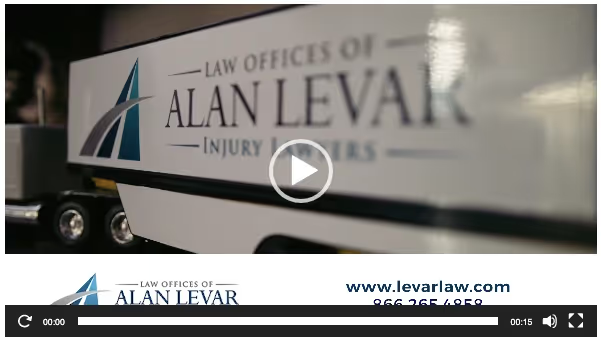
Personal Injury firms are the leader in legal when it comes to brand videos. Levar Law uses short clips to convey expertise and authority. The video focuses on their strategies during representation and signs off by saying, "our experience helps us maximize your value and get you the money you deserve.”
When and where to use brand videos
Brand videos are typically used at the top of the funnel, introducing your firm to new prospective clients unfamiliar with you. They can be used as commercials, on website homepages, and even strategically placed during the intake process.
Why brand videos work for law firms
Ultimately, brand videos are perfect for creating awareness for potential clients and getting them one step closer to becoming a customer. They work because they give customers a quick and easy way to learn about your company and what you have to offer.
2Event videos
Does your firm host online webinars or roundtables? Record the video to share on your website or as a lead magnet. Event videos, like webinars, are a great way to engage with potential clients and break down complex legal concepts. It’s a great way to educate potential clients, increase trust with current clients, and market your expertise.
Event video example: Hope Wood, JD
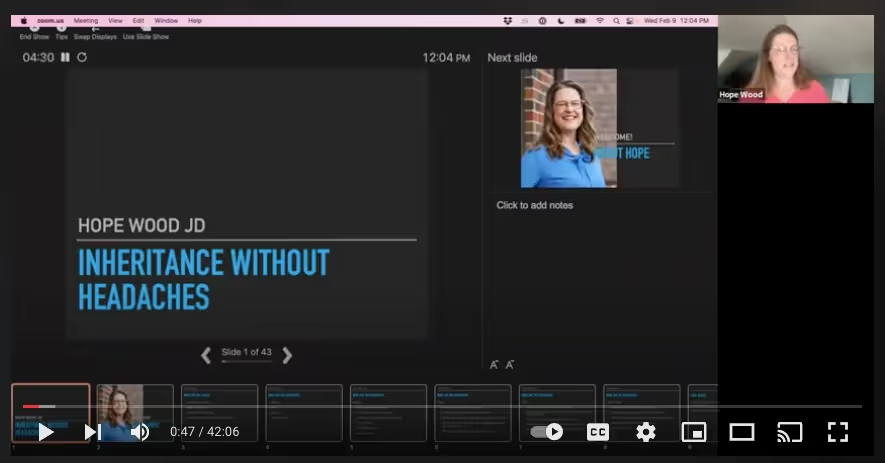
Your law firm can use webinars to break down complex legal concepts and processes to interested clients. Estate Planning Attorneys can use webinars to address preventative measures people can take when setting up wills, trusts, or how to avoid probate. In the Inheritance Without Headaches webinar, Hope Wood guides the attendees through each type of asset transfer, and she recommends the best way to provide an inheritance.
When and where to use event videos
A webinar can be a lead magnet for potential clients. As a bonus, the material from the presentation can be repurposed into articles or shared on social media. For example, you can promote your upcoming webinar by recording a teaser, posting it on social media, and including a link to the registration for the full presentation. Following the webinar, you can create short-form video takeaways from your presentation to share on social media posts so people get the highlights.
Why event videos work for law firms
Event videos work to generate interest, show authority in an area, and possibly even convert potential clients into leads.
3Expert interviews
Expert interviews are a great way to show that you're a trusted voice in the legal community. Having a news outlet come to you for your opinion will add credibility to you and your firm and will establish you as an authority on legal opinions.
Expert interview video example: Pate, Johnson, & Church

The media often call on federal criminal lawyers to comment or explain major current events. The partners at Pate, Johnson, & Church are frequently interviewed on major news networks involving cases they aren't actively involved with. Their interviews explain legal opinions about current events to a general audience.
When and where to use expert videos
Add the video to your website when you're featured on a news program or podcast (many podcasts are video recorded and shared on Youtube). If you have several media videos, you should consider creating a Media page to show all of your interviews. You can highlight the video on your home page if you don't have many interview videos. Or simply create a blog post about the topic and add the video to the post.
Why expert interview videos work for law firms
Generally, expert videos help boost your brand. They highlight your expertise and are used during the consideration phase of the buyer's journey. If a potential client sees you were featured on the news, but your competitor was not- that could be one of the factors why someone will choose your firm.
4Educational videos
Educational videos are a great way to teach your audience about a new topic, change in law, or a service. There are many types and formats of educational videos, including explainers (more on these below), how-to videos, and what-is videos. These videos typically use simple language and visuals to break down complex concepts and make them easy to understand.In addition, educational videos can be used to build the foundational knowledge that a potential client will need to understand their situation better. Whether explaining how a new law affects your clients or providing an overview of your firm's services, educational videos can effectively show your audience and help them make informed decisions.
Educational video example: ABC Law Centers
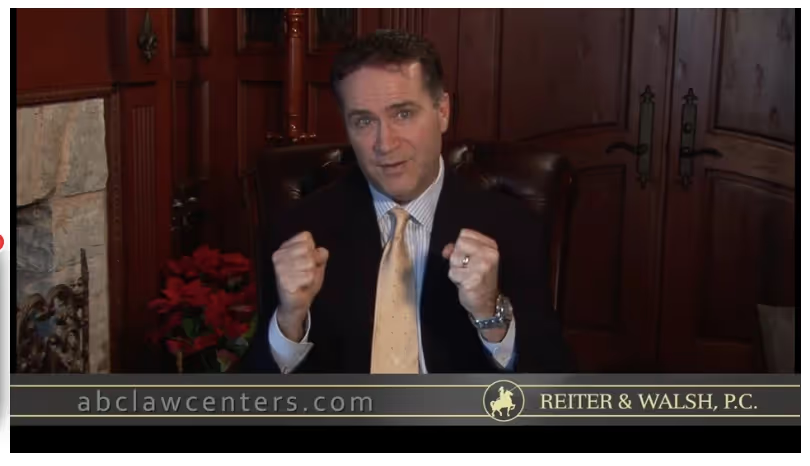
Birth Injury attorneys have an incredible amount of education that needs to happen with potential clients. Considering the distressing nature of these injuries, educational material must strike the right educational tone and be empathetic.Here ABC Law Centers has two examples of how to approach educational videos using the same audio. First, there is a direct-to-audience Overview of Cerebral Palsy with attorney Jesse Reiter, and second, they took the audio and created an animated video.The direct video effectively creates trust and authority, while the animated video can be used evergreen on Youtube.
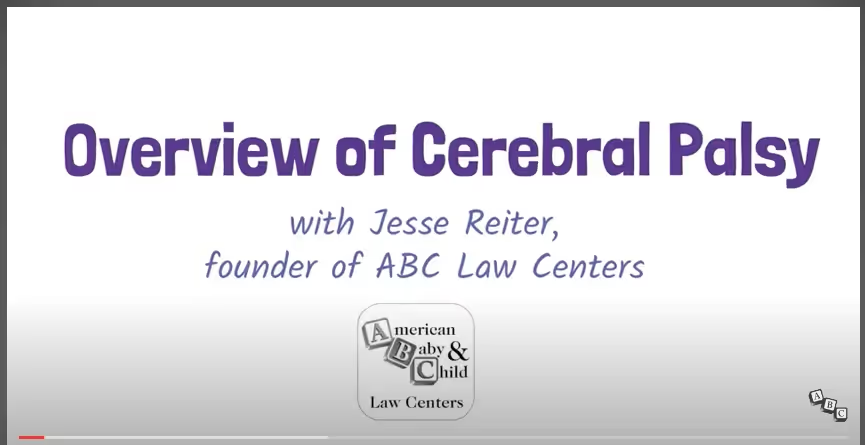
When and where to use educational videos
Add educational videos to related practice area pages on your website. Educational videos can also be used in social media advertising campaigns focusing on awareness of a potential issue.
Why educational videos work for law firms
Educational videos are effective for law firms as they help break general concepts down for a general audience. They can help your firm take a proactive approach to explain how to identify if a potential client has an issue, define legal terms, or simply break down complex legal proceedings.
5Explainer videos
Explainer videos are a type of educational video that helps your audience understand why they need your service. Explainer videos focus on the fictional journey of the company's core buyer persona struggling with a problem. In these videos, you need to show them how to overcome the issue by hiring your law firm.
Explainer videos example: Driver Defense Team
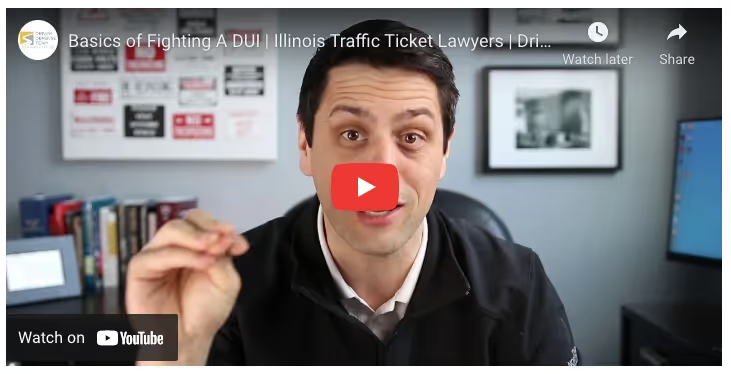
Criminal attorneys can use explainer videos to great effect because often, their potential clients typically need to take immediate action.In this explainer video, Basics of Fighting a DUI, Derek Martin addresses his audience by directly looking at the camera. He highlights the urgent feeling of being charged with a DUI. He overviews the process and how an attorney can help.
When and where to use explainer videos
Explainer videos can be used at various stages in the buyer's journey. Still, they're particularly effective at the top of the funnel when building awareness of your brand and what it offers.
Why explainer videos work for law firms
They work because explainer videos are an engaging way to communicate your value proposition and give potential customers a taste of what it would be like to do business with you. When done right, explainer videos can be highly effective at driving conversions.
6Animator explainer videos
Animated videos can be an excellent format for hard-to-grasp (and, let's be honest- potentially boring) legal concepts that use strong visuals to explain an abstract process.
Animated explainer video example: Bross & Frankel

For attorneys working with injured or disabled people, you may want to consider having the same message in different mediums. Some people may want to watch a video on the topic instead of reading it.Here's a perfect use case for an animated explainer video: Apply for Long Term Disability Benefits by Bross & Frankel. The video takes just over 2 minutes and covers the content in the related blog post.
When and where to use animated explainer videos
Animated explainer videos are evergreen and can be used to punch up a blog post or shared on social media. Animated explainer videos can be used at the awareness and consideration stage of the buying process.
Why animated explainer videos work for law firms
They're particularly effective when you want to introduce a complex or boring legal concept in a way that's easy to understand.
7Client testimonial videos
Creating client testimonial videos featuring satisfied clients who are your best advocates is the best way to show off your law practice. Ask happy clients to describe their challenges and how your company helped solve them on camera.
Client testimonial video example: Johnson & Groninger

Many law firms find it hard to get a review, let alone a client testimonial. Personal Injury and Workers' Compensation attorneys use client testimonials to highlight a client's journey to a successful verdict.This video from Johnson & Groninger highlights the severity of the initial injury, a previous lackluster settlement, and the care and attention attorney Valerie Johnson gave to the client.
When and where to use client testimonial videos
Client testimonials can be used in several ways, such as on your website, social media campaigns, or TV or radio ads. By featuring satisfied clients in videos, you can show potential clients that you're capable of helping them resolve their challenges.
Why client testimonial videos work for law firms
Client testimonials are a powerful marketing tool for law firms as they show satisfied clients. They can highlight your firm's specific processes, strengths, and a client's journey to a successful verdict.
8Social media & live videos
Social Media is its whole beast when it comes to video, and it can encompass all types and formats of video, including Live videos. Live videos are simply videos that are live streamed on social platforms. Social media videos can give viewers a behind-the-scenes look at the firm and for live stream interviews, answering frequently asked questions and giving small clips of information. Social media videos are especially effective because they encourage viewers to comment and ask questions. This makes the experience more interactive and engaging.
Social media video example: Baldani Law Group

Criminal Defense lawyers are out here having all the fun on TikTok. Take a look at Baldani Law Group's Abe Mashni's TikTok page, and you'll find some creative uses of TikTok sounds to give general advice, share his opinion, and show off his sense of humor.
When and where to use social media videos
Social Media platforms like Facebook, Instagram, and TikTok have algorithms that prioritize video content, so using social media videos is a great way to get your firm's content in front of more people.
Why social media videos work for law firms
Social media videos are a great option if you're looking for a way to connect with your audience and stand out from the competition.
9360° videos
360° videos are relatively new and allow viewers to "scroll" around to see the office from every angle — as if they were physically standing within the office. 360° videos are most commonly used on Google My Business. You do have to work with certified Google 360 photographers for this.360° videos work well for law firms because they provide potential clients with a 360-degree view of the law firm's office space and staff, which can help them get a feel for the law firm before they even step inside. 360° videos can also show off the law firm's facilities, including courtrooms, conference rooms, and libraries.
360° Video example: Menzer Law Firm

If you plan on meeting clients or taking depositions in the office, you will want to let your clients get a sense of your office layout. Check out Menzer Law on GMB to see the layout of their Seattle office and lobby.
When and where to use 360° videos
You should use these videos on Google My Business to help fill out your listing.
Why 360° videos work for law firms
Potential clients can get an idea of the layout of your office and what to expect when they come for a meeting.
10Personal message video
Personalized videos can be a creative way to proactively reach out to or respond to a client through email. There are tools, like Loom, that you and your team can use to record overviews of onboarding processes, explain something complex, and reduce meetings by giving asynchronous status updates.
When and where to use personal message videos
During the Intake and Onboarding phases of a client's journey is the best time to share a video from an attorney or legal staff welcoming the client to the firm. You can also quickly film short status updates to keep clients up to date on cases, how-tos, or explainers throughout their matter.
Why personal message videos work for law firms
Unlike the other video types mentioned, you've already converted the client. These videos create a delightful, unique moment for your clients and turn them into advocates. Elevate the client experience with personalized videos and turn your clients into your best advocates.
11Community involvement videos
Community involvement marketing can be a great way for firms to build brand awareness, strengthen relationships with their neighbors, and establish their law firm as an integral part of where their customers live, work, and shop. Use videos to highlight your community involvement, fundraisers, and passions.
Community involvement video example: Ricci Law Firm

Personal Injury Form Ricci Law Firm showcases its involvement with the community in many ways. One way is by sponsoring a pet that's up for adoption and updating its website with videos each Thursday. They also have a recurring spot on the local news where they donate to a specific charity on the first Friday of every month.
When and where to use community involvement videos
Does your firm run 5ks for charities? Do you sponsor t-shirts for youth sports clubs? Are you passionate about animal adoption? These are the kind of interesting and fun activities you can share. Many law firms still award annual scholarships. This would be a great place to start considering what to showcase as your community involvement. Set up a community involvement or location page to house your videos that highlight your service.
Why community involvement videos work for law firms
Showcase your involvement in the community, highlight community events, or even just show off the local area. These videos are a great way to build relationships with potential and current customers.
12Cluster videos
Clusters are a concept coined by Seth Godin, which means to market locally. Law firms are already investing in local marketing strategies with digital marketing like SEO and PPC, so why not use video to highlight your love and appreciation of your hometown? These videos aren't created to convert potential leads. Instead, they focus on growing a community with shared interests and starting a conversation.
Cluster video examples: Brooks Derrick and Ken Levinson

We have two examples of how to put together successful cluster videos with different production levels. Ken Levinson and Jay Stefani of Levinson & Stefani film short videos of their weekly lunch out in the city of Chicago. They simply share what they ordered and how it is. The idea is that you're already out to lunch, so why not take a quick 1-minute video?
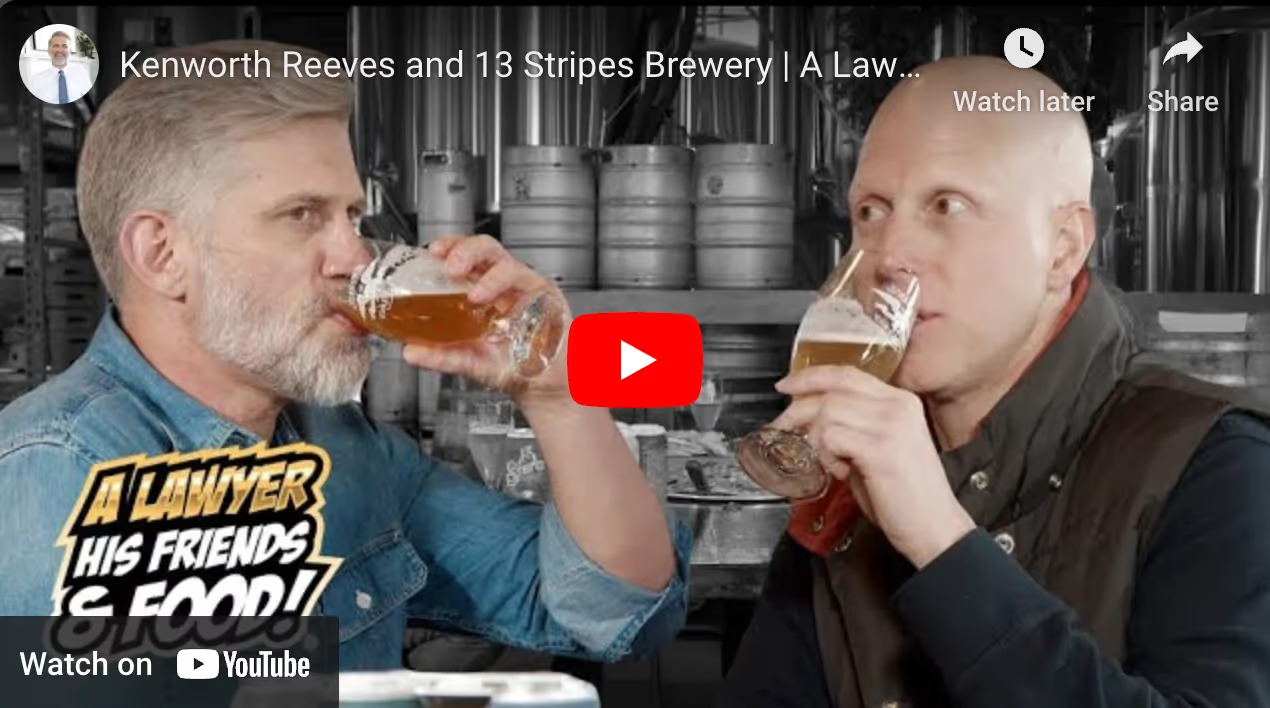
Another Personal Injury lawyer, Brooks Derrick, is out here filming a dang TV show: A Lawyer, His Friends, and Food. These episodes range from about 45 - 60 minutes. Brooks invites friends and entrepreneurs in Greenville, South Carolina, to get drinks and food and just chat.Does either of these videos relate to Personal Injury? No. Are they fun? Heck Yes.
When and where to use cluster videos
Definitely post your cluster videos on social platforms, including YouTube.
Why cluster videos work for law firms
Lawyers are allowed to be human and have fun. Potential clients are extremely receptive to getting a peek into your passions and interests. Cluster videos can set you apart from your competition by highlighting your personality.
Create compelling videos
The use of video by lawyers is on the rise, and there are many ways to incorporate it into your law practice. If you're not already using video, now is the time to start.
One of the most significant challenges attorneys and law firms across all practice areas face is finding and retaining new clients. To make it even more challenging, law firms have declined in demand over the last decade, according to a recent Georgetown Law report. While litigation and bankruptcy experienced positive growth during that period, the need for tax and patent lawyers grew stagnant.What are you doing to make your law firm stand out from the competition? Publicizing your firm doesn’t have to break the bank. You can even do it yourself. DIY public relations saves time and money and increases authenticity because you’re speaking in your own voice, not through a paid representative. Media companies are constantly seeking fresh content. Pitch someone a story – or write one yourself.
Content distribution: what it is and how to do it
Content distribution is the process of sharing, publishing, and promoting your law firm’s content through various media formats and online channels. Content distribution is broken down into three basic categories:
1Owned content
Owned content is distributed to web properties that you control, such as your company blog, social media sites, or email newsletters. Whether you utilize your own website's blog or a hosted platform, it's easy to create, format, and publish short- and long-form articles under your brand's name for your audience to read and share. Creating a list of prospect emails can be an efficient way to circulate content to your target market. For example, when you include a subscription link on your website, blog, and social media posts or offer an incentive – a free e-book download or digital coupon in exchange for an email address – you encourage people to sign up to receive your content straight to their inbox (and you obtain their contact information). You can also distribute content automatically with email marketing software that eliminates arduous and ineffective marketing tasks like preparing email lists, sending generic messages, and manually scheduling events.
2Earned content
Earned content distribution occurs when third parties, such as media outlets or blogs, distribute your content. A social media share, such as a retweet on Twitter or repost on Instagram from another user, is also considered earned content. Sites like Reddit and Quora are highly active forums for internet users seeking information about various topics. By contributing to these forums as an attorney, you can provide valuable answers to simple questions asked by your target audience, which could establish you as an authority without seeming overly promotional.
3Paid content
Paid content commonly comes in the form of cost-per-click (CPC) models, where a business pays a specific dollar amount every time someone clicks through the content. Another type of paid content is sponsored or native content, where a brand pays to place an article that emulates the look and feel of the publisher's existing content. In the legal industry, the tried-and-tested channels include:
- JD Supra. The content marketing service offered by JD Supra is a great way to distribute your content to its readers, which includes in-house counsel, reporters, editors, and more. In addition, more than 35,000 attorneys from some of the world’s leading firms contribute content through the platform’s email digests and social media feed.
- Taboola. A content discovery platform, Taboola can support your firm by reaching prospective clients through dedicated channels and websites they currently follow. Claiming to be the “reverse of search engine results,” Taboola attempts to curate valuable content for users based on their unique interests and preferences – and the platform’s sophisticated algorithms.
- Social media. Although owned and earned content on social media reaches significant audiences, paid or promoted posts on platforms like Facebook can be an excellent opportunity for content distribution. These popular platforms have collected a lot of data on its users, and marketers can use that to their advantage to target the best leads. For example, posts sponsored by Facebook can be particularly effective due to the platform’s enormous user base. However, other widely used platforms, including Instagram, Twitter, LinkedIn, and Snapchat offer sponsored post options.
You can also distribute your content through earned or paid content syndication. Although it might sound complex, syndication means publishing content that has already been featured on your website to a third-party platform. If done correctly, syndication can help you establish yourself as a thought leader, attract more leads for your firm, and move your practice ahead of the competition. The goal: to get more followers by distributing your content to a larger audience. Syndicating your content on LinkedIn, Quora, and Medium is free, and there are many valid reasons to utilize these and other no-cost platforms:
- LinkedIn is the preferred social media platform for lawyers and other professionals.
- Quora has more than 300 million monthly active users seeking answers to their questions.
- Medium distributes the stories you publish to your followers, as well as millions of others who are following relevant topics.
However, depending on who is following you on these platforms, there is no guarantee that you’ll get significant exposure. However, the following paid syndication services/platforms reach out to media outlets and help distribute your content to millions of readers:
- Newswire – a public relations and media distribution platform featuring a press release distribution service that can help you write, publish, and share important news about your law firm with your target audience. Newswire’s distribution service includes the following:
- Digital. This service provides exposure across major media outlets, including Fox, NBC, and Digital Journal, and can help you quickly improve brand awareness.
- Digital Plus. Geared toward companies and individuals who want to build their online presence, this service can help improve your search engine results, drive more online traffic, and expand your visibility.
- State. With this service, you can gain exposure across local, regional, and state media outlets, which is helpful when you target your publicity efforts to a specific region.
- National. If nationwide exposure is your goal, you can distribute your content across the country with Newswire’s national press release distribution service, which shares content through national television, radio, newspapers, and magazines.
- International. When you choose the Newswire international service, you will have the ability to distribute your law firm’s press releases around the world.
- Cision PRWeb – owned by Cision, a software company that focuses on offering cloud-based public relations solutions to companies, Cision PRWeb is a press release distribution service that promises greater online reach, improved visibility in search rankings, and coverage from prominent journalists and bloggers.
No matter what kind of content you're creating, never distribute it blindly. A law firm’s content marketing efforts must be well-planned, well-executed, and well-measured to succeed. Do your research and choose the content distribution platform that best aligns with your firm’s goals and your target market’s online consumption habits.
How to leverage your small or medium-size status to promote your firm
One major misconception is that the best lawyers work for big law firms. However, talent is spread throughout the legal industry, and competent lawyers at big firms often go out on their own and open their own small or medium-sized legal practices. In addition, many consumers prefer smaller firms over large ones, perhaps because they sometimes charge less, might offer more personalized service, and may put less pressure on their lawyers to increase their billable hours. In recent years, many consumers have consciously decided to “shop small” and support their local business community. According to a recent Nielsen study, 12 percent of consumers worldwide said they exclusively buy from small or medium-sized businesses, and 26 percent of global consumers purchase from small companies whenever convenient. To capitalize on unintentional and exclusive small buyers, small and medium-sized firms should consider targeting consumers who prefer to shop at small businesses. Here are some strategies:
Be informative
Lawyers are uniquely positioned to provide helpful information to potential clients. Being highly educated and experienced in specialized areas, lawyers are qualified to provide insight on issues that affect many individuals and bring an element of trust and authority that people respect.
Use HARO (Help a Reporter Out)
HARO is a free online service that links content creators to expert sources. When you sign up on HARO, you can receive daily emails describing the articles journalists are currently working on and the types of sources they are looking for. If you spot a topic that falls within your expertise, you can send your pitch to the journalist for consideration.
Become a thought leader
Thought leadership involves marketing informational, valuable content that will build credibility for individuals or leaders within a law firm. The goal of thought leadership is to become recognized as an expert within your area of law (although lawyers are not usually allowed to call themselves experts). Instead, you want to be seen as the go-to attorney in your area or region. Therefore, thought leadership is most effective when lawyers position themselves as a resource for valuable advice related to their area of expertise so that when someone is looking for the type of services you provide, they will contact you first.
Be newsworthy
Captivating stories engage audiences. Media coverage can expose your firm to a broad public audience, including your next clients. Although it can be challenging to get media organizations to listen to what you have to say, being newsworthy should be the foundation of any law firm’s public relations strategy. In addition, news organizations want to share new and noteworthy information with the public. Although finding ways to share topical information can be challenging, it often carries more long-term opportunities for your firm.
Emphasize your value
Marketing to clients already interested in retaining your services gets you on the right track. However, that doesn’t mean prospects will automatically flock to your firm – you still need to prove to them why your firm is worth hiring. To demonstrate why your firm is the best option, you must determine your value proposition – what makes your practice unique in its respective market – and find ways to distance yourself from the competition.
Promote without being self-serving
While making headlines can help increase your exposure to potential clients, you should consider how you’ll be received. There is a fine line between providing valuable information and being seen as selfish and opportunistic. Try to share content based on your goals, is cause-specific, and doesn’t offer much shameless self-promotion.
Target the right audience
A successful lawyer understands who their audience is and knows how to reach them. While many believe anyone can be a customer, targeting the appropriate audience will yield superior results. Instead of focusing on the number of prospects you reach, focus on the quality of the client. To do this, you must learn where your target audience gathers online and, in your community, and use that information to determine where and how you will spend your time.
Stay involved in your community
Becoming involved with your local community offers opportunities to meet neighbors, forge relationships, generate loyal customers, and boost business. One way to get involved is to sponsor local groups, e.g., a local recreational sports team, or host community events (educational activities for children). Doing so can significantly increase brand recognition, get your name out there, and help attract more attention to your law firm.
Use multi-channel engagement
Give clients many ways to get to know your firm and its services by creating and maintaining a solid presence on social media. In addition, create a website or blog where customers can obtain more information about your firm and reach out to ask questions. The more online presence you have, the easier it will be for customers to find you organically.Don’t underestimate the power of referrals. Keep your clients happy, and they’ll share their experiences with others, allowing you to reach, persuade, and convert new clients.
Nurture existing customers with email marketing
While obtaining new customers is vital, it’s just as critical to nurture relationships with current clients to help ensure that they remain loyal to your firm. Automated email marketing can effectively maintain these relationships through personalized, scheduled, and targeted emails that streamline follow-ups and help move leads from one stage to the next.
Looking for efficient ways to promote your firm? Lawmatics can help
Automate your law practice to drive growth in your business while staying focused on your clients. With Lawmatics, you can automate your intake process and create, schedule, and send automated client communications to keep everyone in the know. Improve your organization, work more efficiently, and account for every detail from intake to happy client. To find out more about how our cloud-based software for lawyers can help you win clients, request a demo today.

No matter the size of your firm or the practice areas you serve, professional networking is an important aspect of growing your business. While growing your professional network is important, we know that you are accustomed to dealing with competing priorities and this one may sometimes take a back seat to other more pressing items.Lawmatics is just the tool to aid you in not only tracking referrals, but also interpreting insights into your network and making informed business decisions based on them. With the help of automations, you are able to “set and forget” an all-encompassing process for building and strengthening your referral relationships.In order to make the most of your referral tracking efforts in Lawmatics there are several things you first need to account for. You’ve probably heard the phrase “garbage in, garbage out” when it comes to entering and interpreting data. This phrase certainly applies here: without clean data going into the system, you will not reap the benefits of the helpful insights that can come out. When all of these elements of referral tracking come together, you will wind up with the key pieces of data you need to determine where and how to best invest in your referral network. Lawmatics not only makes these results easy to produce, but also simple to interpret and take action upon. By the end of this tutorial you will be able to provide a better experience for both new referral clients and referral partners, leading to more conversions, more referrals, and more bottom line.
Setting Up Marketing Sources
Your first step in tracking referrals is to familiarize yourself with and make any adjustments to the marketing settings in Lawmatics. To get started, click on the “Settings” gear icon near the top right corner and then select “Marketing Sources” from the left sidebar. If you are brand new to Lawmatics, you will only see one source here, and that is Referrals. Take the time to add any other sources from which your firm may get leads.Let’s focus on that built-in Referrals source. This source is different from any of the other custom sources you may create in that it will allow you to track individual referrers under this source rather than tracking a subset of campaigns.

Notice how in the image above, you see a list of names under the Referral source. To make the most of this feature, we suggest importing a list of all your firm’s referral partners using our mass import feature.It’s recommended to use a tag to label these contacts as referral partners, so before you import your list, format your spreadsheet as shown in the image below:

Feel free to include any additional fields such as phone number, company name, birthdate, etc. Then go to the “Import” page found on the left sidebar in settings to run your import. We’ll dive deeper into how you go about actually using and populating this data in your CRM in the section of this tutorial.You may have noticed that the built-in Referrals field does not necessarily differentiate between attorney referrals, client referrals, and any other type that may come into your firm. If this is something you would like to track, we suggest making a custom field for this data. Try to avoid creating additional custom marketing sources for these different types of referrals as they won’t follow the same format as the built-in Referrals field.Your custom field for tracking referral type may look something like this:
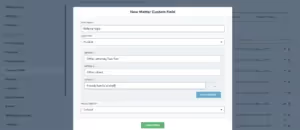
Now you’ll be able to select not only who referred the new PNC, but also which of these categories they fall into.Last but not least, if you also would like to track other attorneys that you may refer matters OUT to, we suggest setting up a custom field for this as well. This is completely optional, but is something that we recommend if you would like to view any statistics on this data down the road. That custom field will look something like this:

By making it a lookup type field, you will be able to select from any of those contacts that you have imported in from the spreadsheet example above (or any other contact in your CRM).All of these steps are setting you up to avoid the “garbage in, garbage out” debacle that can happen so often with CRMs. Take this a step further by reading onto the next section.
Populating Data in Your CRM
With referral tracking setup taken care of, refer to the following best practices when populating actual referral data into the CRM. There are several methods by which data can be entered, the first of which is the matter profile.
Matter Profile
Remember that Source and Campaign are both built-in fields in Lawmatics designed for data entry and we do not recommend making custom fields for tracking referrals except for the “type” and “referred TO” fields explained above. When you go to a matter’s profile, click on the “Details” tab to view all data fields for this matter, and then click “Edit” at the bottom right to populate or change any data. You will find both the Source and Campaign fields under the “Matter Information” section on the page. Note that once you select “Referrals” as the Marketing Source, the Campaign field label will update to display “Referrer” instead, as shown below.

In the “Referrer” field, you will be able to select from any contacts in your CRM. Simply begin typing their name or email address and the contact will appear in the drop down. Remember the import we discussed earlier? Any of those referral partners that you imported in will be available to search for in this drop down list.The reason for populating this data via drop down list rather than having you type in the name is to normalize the data for future reporting purposes, avoiding any misspellings or name variations. You’ll be able to easily generate lists of which referrers brought in which matters along with any other data points, covered in the reporting section of this tutorial still to come.
Custom Forms
In addition to populating data directly in the matter profile, you can also capture this information in a custom form. This can be very useful if you use an internal intake form for leads calling in, a staff notes form, or really any other variation of an intake form for collecting initial information.The main thing to keep in mind when collecting this data via form is to once again make sure you are using the proper built-in fields. You will find the fields for Source and Campaign (remember, this field changes to Referrer when Referrals is selected as the source but it is still technically called Campaign) in the Standard Fields section in the form builder. Drag and drop the fields onto the form, as shown below.

If you are using an internal form for the intake process you may also wish to include the “Referred TO” or “Referral Type” custom fields that you created in the first section above. However, remember that lookup fields can only be used on internal forms, which applies to your “Referred TO” contact lookup field.
Automate the Referral Process
You now have everything in place to effectively track your referral data. Take your setup to the next level by adding automation to the process. There are many different ways that automation can be implemented into your referral tracking, here we will discuss a few suggestions from the Lawmaticians.
Thank the Referrer
One of the best and most simple ways to strengthen your referral relationship is to thank someone for sending a referral your way. Without Lawmatics it may seem tedious and labor-intensive to keep tabs on who referred each lead and to actually go about thanking the correct referral once the lead hires your firm. An automation can make this a quick and easy step in your process.In the example below you will see that we have created an automation that triggers when a lead changes to the Hired status, only if their source is Referral and a Referrer (Campaign) has been populated. We are then assigning a task to call and thank that referrer.
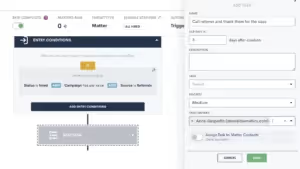
Depending on your process, you may find a different automation trigger or action item works better for you. Feel free to customize this so that it best suits your firm. However you decide to set it up, the small step of thanking this referral partner can greatly strengthen and solidify your relationship to that person.
Refer a Matter Out
If you commonly refer matters out to other law firms, you may like to set up an email template for sending the matter’s information to this partner. Begin by going to the Emails page under the Assets tab and create a new email.When creating this email template you will need to keep something in mind regarding field merge. This email template will either merge in the matter’s information or the recipient’s information, but it will not merge in both. Most commonly, you wish to have the matter’s name, phone number, email address, and any other pertinent information merged in as opposed to the referral partner’s information.To accomplish this, note how we have addressed the email Dear Friend as opposed to using the referral partner’s name, since the name merged in will be the matter’s name.
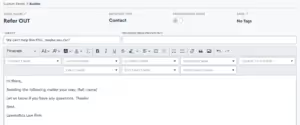
When you build this email template into an automation, it is crucial to make sure you select the email recipient, as well as the merge data from option accordingly. This is demonstrated in the example below.
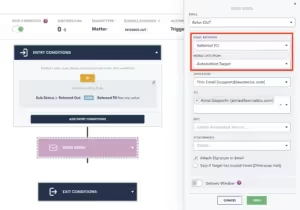
This tells the system to send the email to the contact selected in the Referred TO field, but any merge fields in the email will display the automation target (the matter)’s information.You will see that we have implemented a custom sub-status of Referred Out as the trigger for this automation. This is a great way to set up future reporting on how many leads were referred out of your firm and to whom they were referred.
Referral Reporting and Analytics
Lawmatics custom reporting puts you in the driver seat to slice and dice your data any way that will prove insightful for your firm. While there are infinite ways to customize a referral report, here we’ll walk through some of the basic steps.
Create a Custom Report
You’ll find the reporting feature under the Insights tab at the top of your page. Once you create your report, you will begin by adding columns and filters. Below you will find a sample report showing some columns and a filter that we would recommend for tracking marketing sources. Feel free to add any additional columns or remove any of these on your report as you see fit.
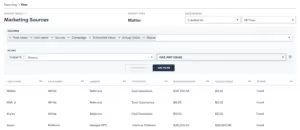
Filter the Report
Note that we have filtered this report if Source Has Any Value. This will show us our referrals in comparison to other marketing sources as well, if you wish to only see referrals on this report, simply select Source Is Equal To Referrals.
Add Grouping
If you do keep the filter that we have demonstrated in the image above, then we recommend grouping the report based on the source field. This will blanket your Referrals together, and show you the total number versus your other marketing sources.

Now we are seeing valuable information on our referral performance. First, we see that four matters came from referrals versus less for the other two sources shown. We also see the referrer Saul Goodman brought us two leads, where our other referrers only referred one each. Looks like it might be time to take Saul out to lunch and build that relationship.
Analytics Page
In addition to custom reporting, you can also utilize the Analytics page, also found under the insights tab, to gain insights into your referral performance. First, use the provided source stats graph to visually see where Referrals stack up against your other marketing sources.

When you scroll to the bottom of the Analytics page, you will also notice the Stats by Source section. Expand the campaigns on the Referrals source, as shown below, to see an abundance of data on each referral partner, including any money you have spent on that person as well as how much revenue they have brought in to your firm.
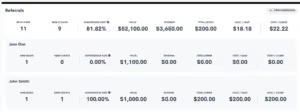
Whether you are customizing a report or taking advantage of our built-in graphs and calculations, Lawmatics has all the tools you need to make informed decisions on how to best manage and strengthen your referral partnerships.
Conclusion
While you may or may not enjoy networking, there is no doubt that it is an essential part of running a successful law firm. With these referral tracking tips Lawmatics helps you streamline this once-tedious and time consuming element of your practice.One key takeaway from this tutorial is the importance of creating a strong foundational setup for your referral tracking. If you aren’t populating data into the system correctly then you won’t end up reaping all the benefits. When you put good data into your CRM, you will come out with good insightful reporting on that data. Use these insights to determine where to invest further in your referral network.Like everything in Lawmatics, once you add automation to the referral process you will up your game to the next level by removing any need for manual labor. Not only will you save time, but you will also create stronger relationships with referral partners than you ever have before through the use of automated thank you’s and check-ins.Worry less about managing the business side of things, and create more space to think about your clients and practicing law. We’d love to hear how you use Lawmatics to track referrals and how it has helped build your relationships, email us at support@lawmatics.com to share!
Most businesses, including law firms, need a plan for handling unexpected situations, typically including some type of insurance policy. However, some lawyers might question whether small to medium law firms need malpractice insurance, commonly known as lawyers’ professional liability coverage. If you are one of them, you might be in for an expensive reality check.According to a recent annual survey conducted by insurance broker Ames & Gough, legal malpractice insurers are reporting huge payouts of tens of millions of dollars for liability lawsuits, even though the number of claims being made has remained relatively flat in recent years. Ten of the 11 insurers surveyed said they had a claim payout exceeding $50 million in the past two years, three insurers reported paying a claim between $150 million and $300 million, and four paid a claim over $300 million.
What is lawyers' professional liability coverage, and do I need It?
Lawyers’ professional liability (LPL) insurance, also known as legal malpractice insurance, can help to protect a lawyer or law firm from expensive consequences should a client sue the firm or attorney for errors or apparent mistakes that may have happened during the representation. Professional liability insurance can pay for the cost of defending lawsuits against lawyers or law firms and any payments or awards that arise. Such policies also help protect against employee theft or internal fraud that might affect a lawyer’s or law firm’s reputation. LPL insurance is not required in most states, and Oregon is the only state currently mandating it. However, any attorney in private practice should consider carrying it. The reasons: One misstep in a case could lead to liability, defending a malpractice lawsuit can cost tens of thousands of dollars, and an unfavorable result could cost even more. Even attorneys who consider themselves “judgment proof” (although few, if any, actually are), the headaches of a malpractice suit and potential bar disciplinary action they might have avoided make malpractice insurance well worth the expense.
Legal malpractice insurance options
There are two types of professional liability coverage: 1) errors and omissions liability (E&O), which is designed to protect a law practice from claims arising out of alleged errors and omissions related to work performed for clients, as well as claims for bodily injury or property damage, and 2) professional liability, (also known as a general liability), which covers damages that result from professional services rendered. In addition, the policy generally includes such coverages as legal malpractice, libel and slander, personal injury protection, legal defense expenses and cost related to the trials, and any settlements or damages awarded against your firm. Professional liability insurance policies typically include numerous significant provisions. These include:
Prior acts
The date after which losses may occur and be covered under the policy. Maintaining continuity of coverage and prior acts coverage is a critical consideration, and the prior acts date should be the initial date the law firm was formed.
Limit of liability
The maximum amount the insurance company will pay for the coverage. Limits are usually expressed as “per claim” and “aggregate” (the most the insurance carrier will pay for all claims during the policy period). In some circumstances, certain types of practices may have clients that require proof of certain levels of liability insurance, such as outside counsel for corporate clients.
Deductible
How much the firm will pay out-of-pocket in the event of a claim. Fewer and fewer LPL policies offer zero deductible coverage. However, it can still be obtained, usually at a significant premium.
Extended reporting period (ERP)
This endorsement protects against claims initiated after coverage ends pertaining to cases handled during the coverage period. The cost for the endorsement is a percentage of the expiring premium and will vary depending on the number of years selected.
Claim expenses
Coverage for the cost of defending against claims, such as attorney fees, costs, and investigative expenses.
Disciplinary coverage
Coverage for bar disciplinary matters.
Subpoena coverage
Coverage for expenses associated with responding to a subpoena.
Lost earning reimbursement
Protects the insured against lost earnings due to attendance at hearings or a trial associated with the lawsuit.Firms should also be aware of what LPL insurance may not include. For example, many policies deny coverage when one insured files suit against another insured under the same policy or if a lawsuit arises from the insured’s intentional misconduct. Some policies also reject coverage in certain high-risk practice areas, mandating additional premiums to extend coverage in those areas.
Factors to consider when choosing an LPL carrier
A lawyer should never buy LPL insurance on price alone. Here are some reasons why:
Level of protection
If you can’t afford to pay a potential claim out of your own pocket (how many lawyers can?), you need adequate LPL coverage. The purpose of insurance is to transfer the financial risk you cannot afford to carry yourself, and without formal LPL coverage, you’ll still pay in the event of a claim, and the cost will likely be much more than the premium you pay each month.
Strength of carrier
Price is important, but you should never buy a policy simply because you think it’s a good deal. Always make sure your carrier is financially sound so that it will be there if and when you make a claim. In addition, not all carriers are strong in all lines, so make sure the company you purchase your LPL coverage from specializes in your desired type of coverage.
Claim payment history
When you buy insurance, you buy a promise that the company will pay valid claims. So even if you can find a cheaper policy, if that company doesn’t have a history of honoring the claims of their policyholders, are you really saving any money?If your firm is contemplating whether to change LPL carriers, full prior acts coverage should be negotiated into the new policy if possible. Once a prior acts date is established, it must be maintained on all future policies, whether you stay with the same LPL insurer or switch to a new carrier.
How much does LPL cost, and how much covering do I need?
Although LPL insurance is not cheap, it can be essential for law firms. The most crucial document that insurers use to determine the insurance premium for the law practice is the application, and the accuracy of your answers will help ensure an acceptable price. According to the American Bar Association (ABA), the factors that typically determine the rate you will be charged for LPL coverage include:
Limit of liability selected
Generally, a higher limit of liability will translate into a higher insurance cost.
Practice area
Those who practice in high-risk areas such as securities, banking, personal injury, and real estate can expect to pay more for coverage. In addition, some attorneys might have to pay an extra premium to get the specific coverage they need.
Claim history
The personal claims history of all attorneys in the firm.
The state of the insurance market
In “soft” markets, rates are generally lower and coverage more available than in “hard” markets, when even renewing an existing policy may be difficult or expensive to accomplish.
Desired deductible
The higher the deductible you are willing to pay, the lower your premiums.
Years of experience
Contrary to what many believe, malpractice insurance costs for new lawyers are often less than for more experienced lawyers since seasoned attorneys are more likely to take on cases of greater complexity.
Geographic area
The claim experience of the other lawyers who practice in your geographic location and the litigation atmosphere of your jurisdiction will classify you in a particular risk pool.
Firm size
Some companies offer more competitive rates for firms that employ more attorneys.
Office management
If your firm has instituted legal malpractice prevention controls such as automated conflict checks that help eliminate costly errors, you might qualify for insurance premium credits. How much LPL coverage should you buy? The answer to this question depends upon two things: your practice and your financial circumstances. You should do a risk-benefit analysis to assess the value of your assets and review how much coverage you will need to protect your clients.
Controlling the cost of your lawyers' professional liability insurance
LPL insurance is generally not overly expensive, and most LPL carriers accept monthly premium payments, making it much more affordable than defending a legal malpractice claim.Here are some ways to reduce the cost of your LPL insurance:
1Be careful when classifying attorneys
Insurers commonly price a law firm’s premiums based on the number of full-time attorneys employed. Some insurers distinguish between various counsel relationships, including “of counsel,” contract lawyers, and retired or part-time attorneys. The risks associated with these types of lawyers are typically different from those associated with a full-time practicing attorney. A law firm that treats all its attorneys the same, regardless of role or schedule, may be paying a higher than appropriate LPL premium.
2Evaluate your law firm's practice areas
LPL insurers typically evaluate the risk of insuring certain practice areas, basing their decisions on two factors: how often claims are made and how serious they are. Specific practice areas, such as personal injury, family law, and real estate, may have higher claim frequency. In contrast, other AOPs, like intellectual property, environmental law, and securities, typically have more serious claims. If your firm dabbles in non-core practice areas, it may be worth considering whether this habit adds unnecessary risk without sufficient return.
3Reap the rewards available
Some LPL carriers offer lower premiums to firms based on their history of a clean claims record or repeat business, while others provide specific premium credits linked to the law firm’s efforts to manage risk. For example, if a law firm can demonstrate dedicated use of risk management tools, such as formalized billing practices, a calendar tickler system, docket control, and a conflict resolution process, it may receive a discount on its malpractice insurance premiums.
How to avoid legal malpractice claims
Mistakes and oversights happen, but without LPL coverage, these errors can result in the loss of a license, job, or an entire law firm going out of business. Although most lawyers could easily come up with many ways big law firms differ from their small and solo counterparts, all size firms face the same type and proportion of legal malpractice claims. The most significant number of legal malpractice claims are related to three practice areas: trust and estates, business transactions, and corporate and securities. According to the Ames & Gough survey, many insurers also saw in increase in cases involving insurance defense and tax work/matters. Many of the lawsuits filed against tax attorneys were related to rapid changes in tax law during the COVID-19 pandemic, specifically the Families First Act, The Covid Tax Relief Act, The America Cares Act, and the Child Tax Credit.But regardless of the area of practice, how can attorneys avoid legal malpractice issues?
Don't dabble
Avoid taking on matters outside the scope of your legal expertise. Generally, the more complicated the cases being handled, the higher the payouts made by LPL insurers when something runs amuck. Lawyers who routinely stray outside their usual practice area are treading on a slippery slope – you don’t know what you don’t know.
Be attentive
Rule 1.4 of the ABA’s Model Rules of Professional Conduct requires attorneys to communicate important information with their clients, and the failure to do so can lead to malpractice claims. Practice management software for law firms can help you create, schedule, and send automated client communications that will keep everyone in the know.
Eliminate errors
Given the increasing complexity of many legal matters, even an otherwise ‘simple mistake’ can lead to a sizeable legal malpractice payout. As a result, firms should automate routine tasks to ensure accuracy and save time.
Avoid conflicts
Put a process in place to identify conflicts of interest. Every year since the Ames & Gough survey began in 2010, participants have said that conflicts of interest – including perceived conflicts of interest – are one of the most alleged legal malpractice errors, likely because courts may view such errors as a breach of an attorney’s duty of loyalty to a client.While LPL coverage is not required, most lawyers would rather not risk their personal assets for expected risk exposure. Lawyers’ professional liability insurance is essential to protecting a lawyer’s financial well-being and can be critical in preserving a lawyer’s professional reputation and livelihood.
Lower your firm's malpractice risk with Lawmatics - find out how
Case management software can help avoid malpractice claims involving conflicts of interest, overlooked deadlines, clerical mistakes, remote work, and much more. The Lawmatics platform will:
- Automate your intake process.
- Send customized communications to any segment of clients.
- Keep all your client information in one centralized location.
- Let legal CRM handle your marketing efforts while you focus on the most valuable tasks.
- Improve client relationships with regular status updates, educational emails, and reminders of pending appointments.
- Take time-saving shortcuts by automating processes that typically take hours or days.
- Create error-free, customizable documents with a few clicks.
To find out more about how Lawmatics legal case management software can boost your firm’s productivity while lowering its malpractice risk, sign up for a product demo today.
Subscribe to get our best content in your inbox
Ready to grow your law firm with Lawmatics?
Schedule a demo of legal’s most trusted growth platform.
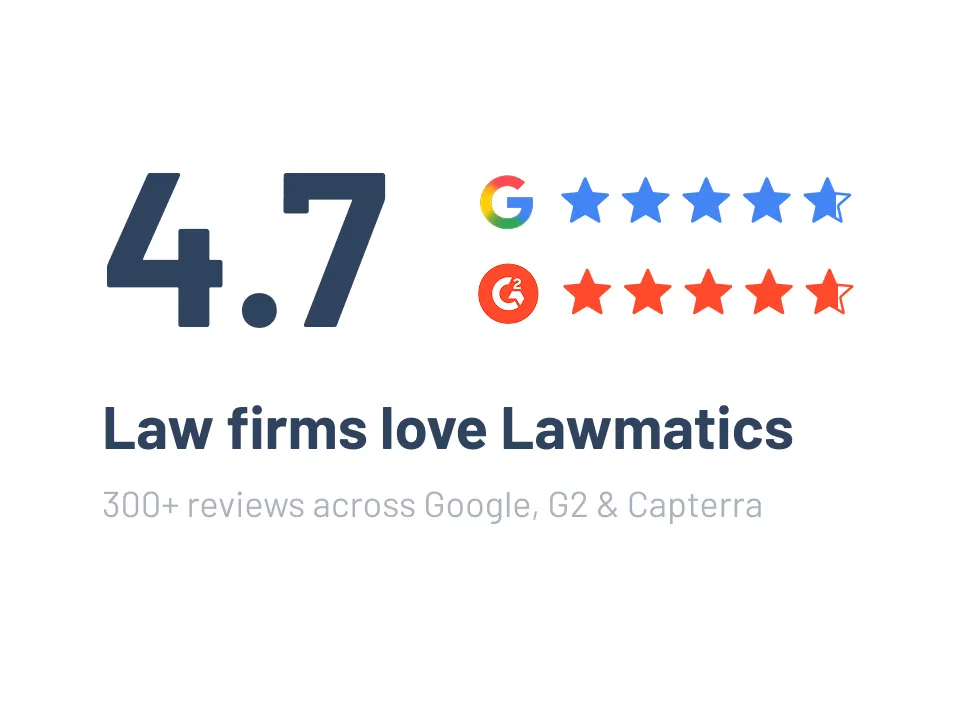




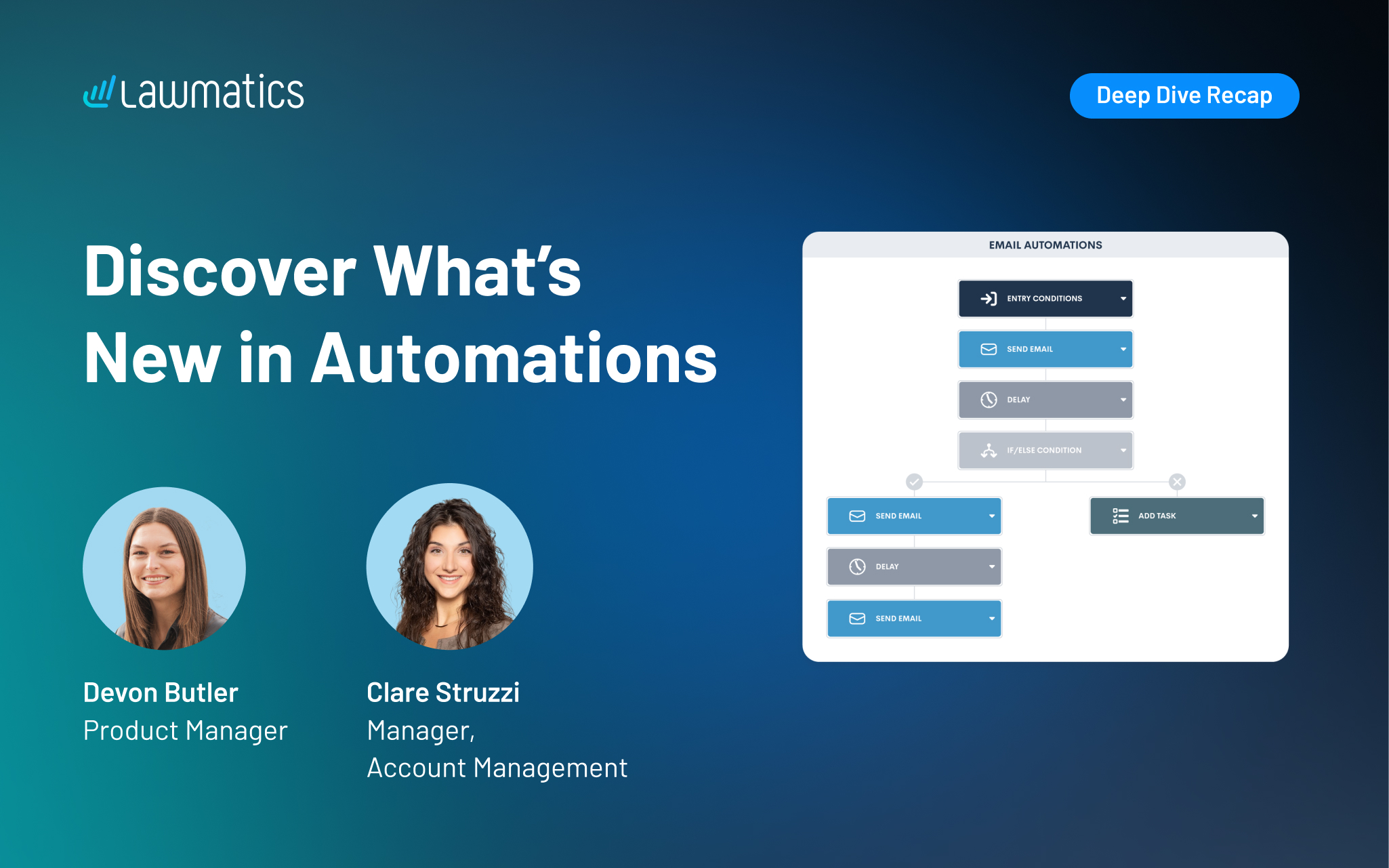


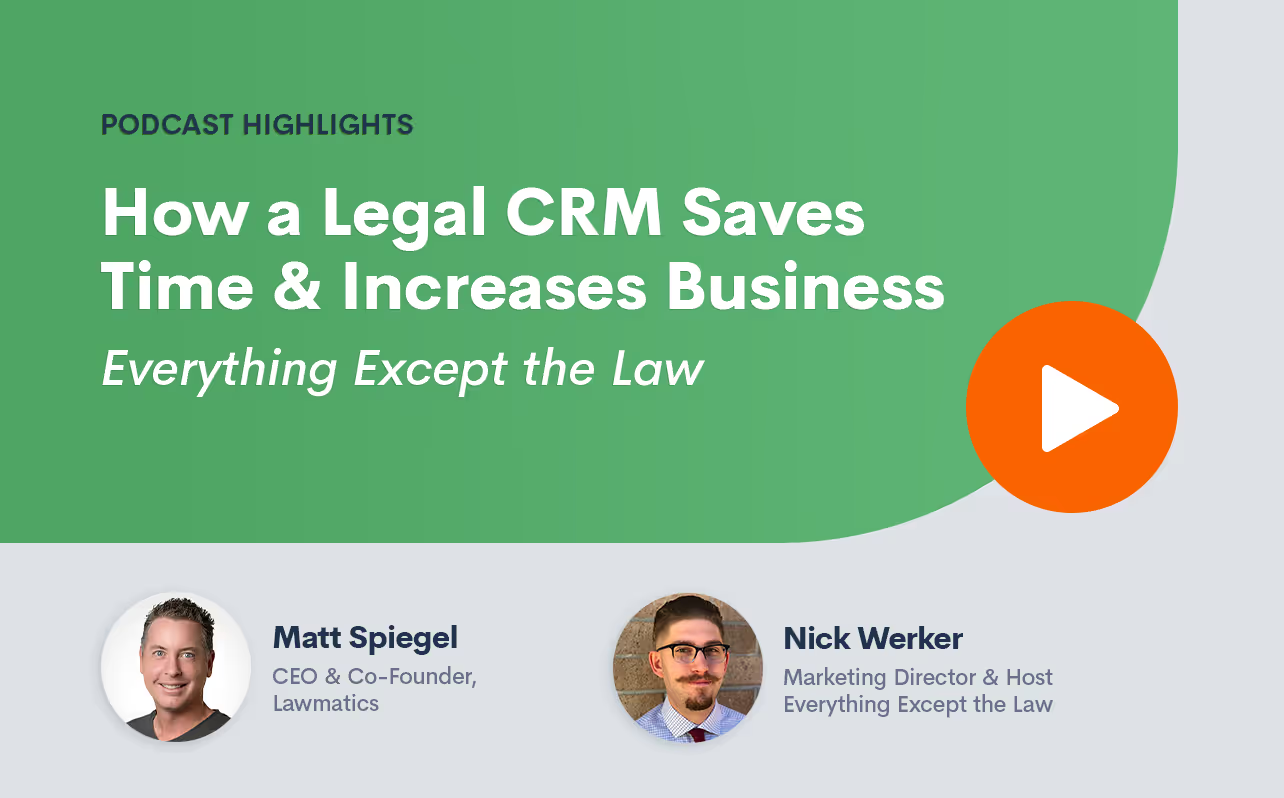


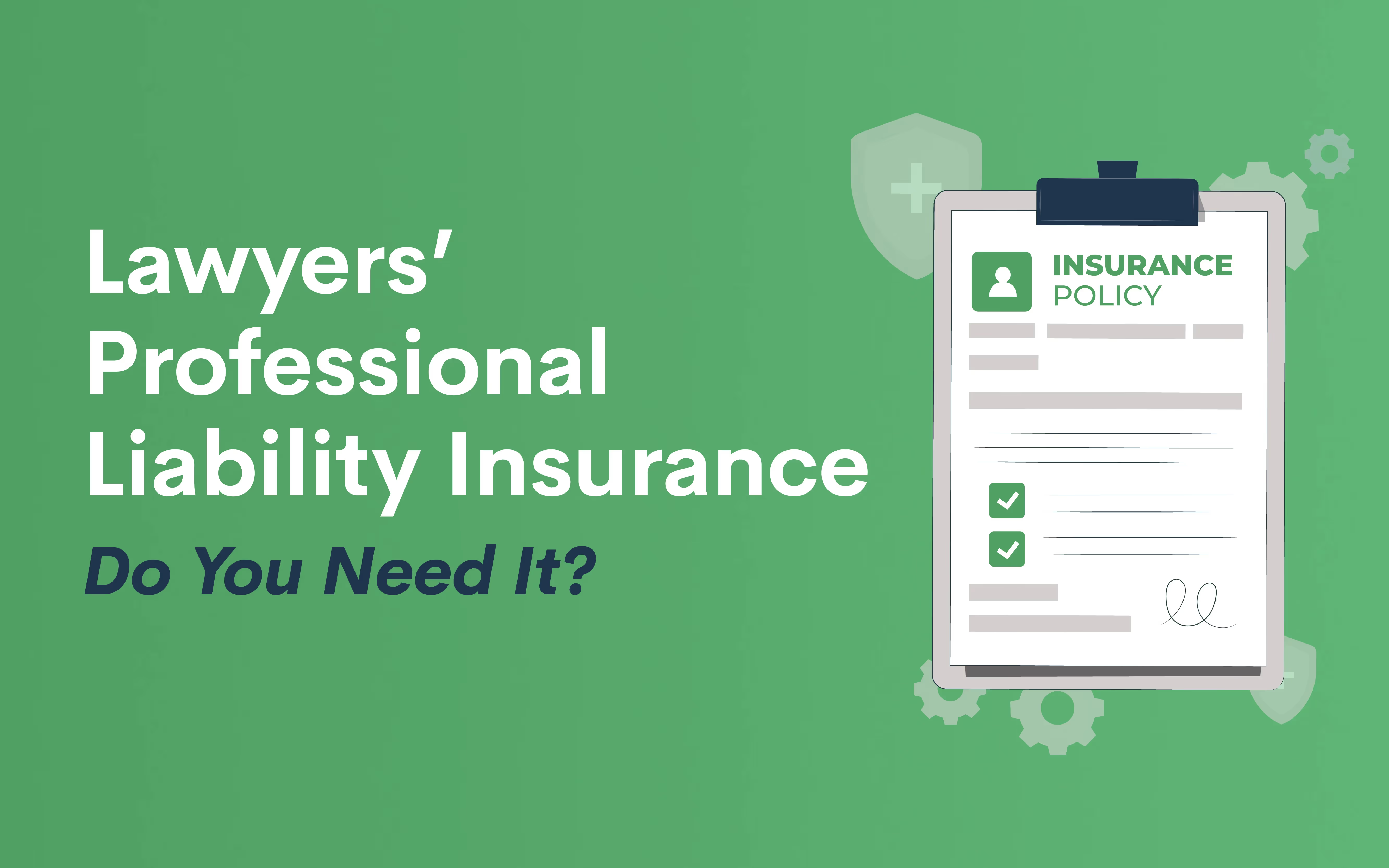
.avif)
.avif)

.avif)
